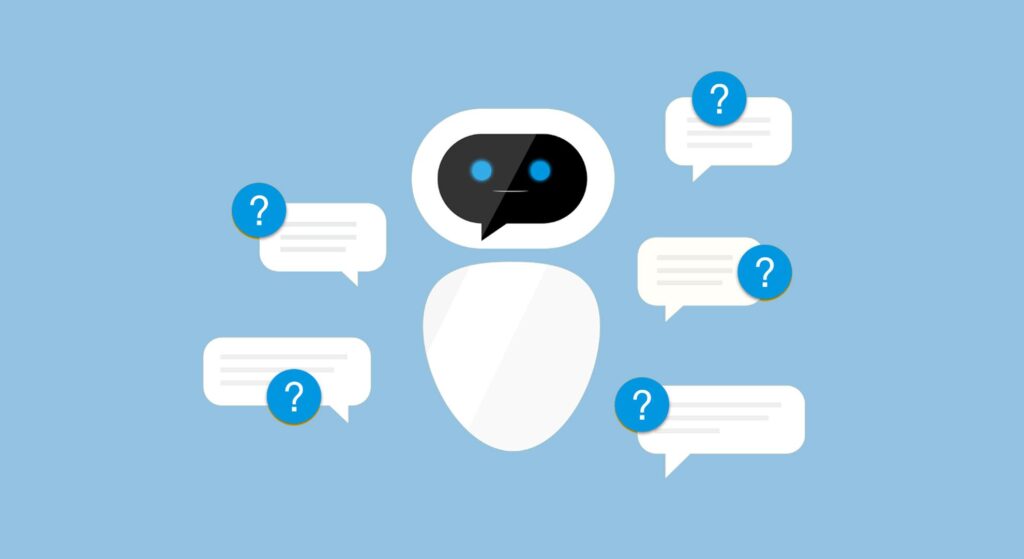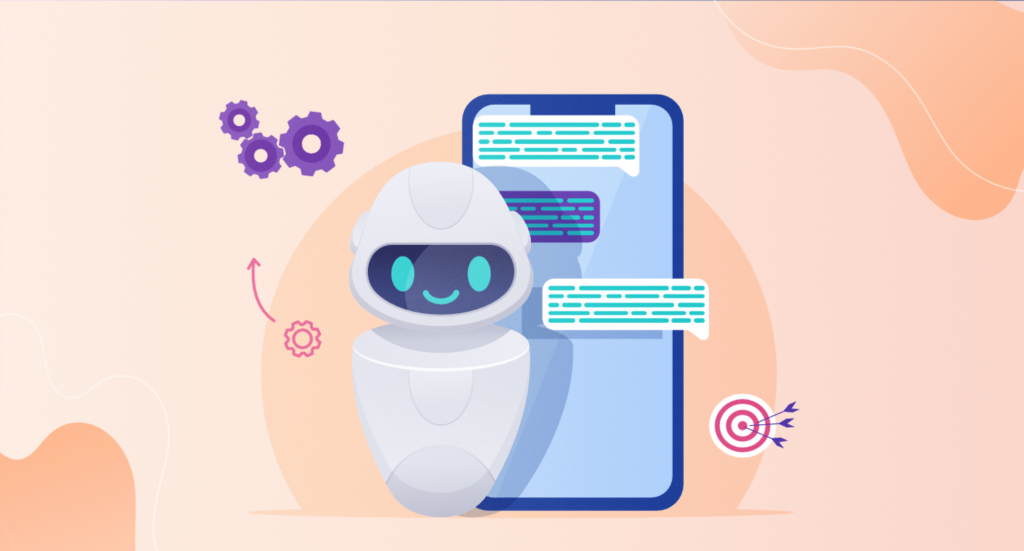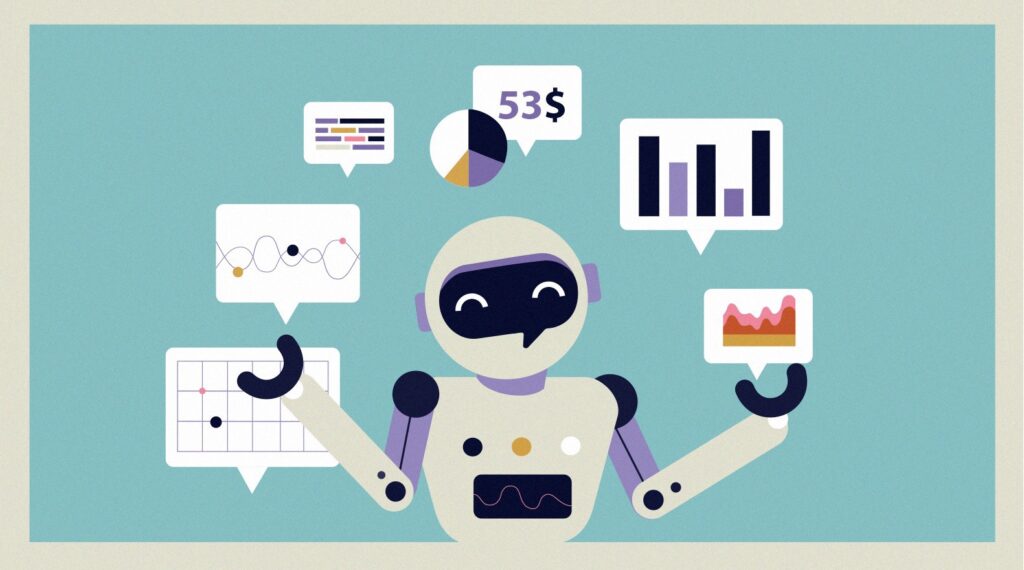Chatbots are all the rage nowadays. As they are becoming increasingly popular in business, among marketers, and because customers love them, it is worth knowing what they are about.
What is a chatbot? A chatbot is a computer software that can simulate conversation with users. A user communicates with the bot via the chat interface through text or voice, just like you would talk to a person.
The chatbot interprets and processes users’ words and phrases and then gives an instant pre-programmed.
Today, we have leading Facebook Messenger chatbots that can integrate with FB Messenger, Instagram, your website, and also work on mobile apps.
Although there are different types of chatbots that work differently, a Zebrabuzz chatbot can work like all of them, depending on the user’s needs.
How Do Chatbots Work?

Like regular apps, chatbots can have an application layer, a database, APIs, and Conversational User Interface (CUI).
There are primarily three types of chatbots, and they all work differently. They are; Rule-based chatbots or Decision-Tree bots, Intelligent Chatbots, and AI-powered chatbots.
Chatbots do not just chat; they can also convert leads into customers via conversations, help you collect user details like phone numbers and emails, sell your products and stay online 24/7. You can also use chatbots to take payments for your services online.
How Rule-Based Chatbots Work

Rule-based or Decision-tree bots are the simplest chatbots. A conversation with a chatbot like this is mapped out like a flowchart.
Users interact with rule-based bots by clicking on buttons as well as using predefined options.
To provide relevant answers, a chatbot like this requires users to make a few selections. Users cannot type in and must follow the buttons that have been provided to solve their problems. These bots are usually used to answer frequently asked questions (FAQs).
It is easy to create a rule-based chatbot and even easier on a platform. This is because it only takes a few minutes to design a Facebook and Instagram chatbot.
You can use the bot to answer user questions, provide information about your brand, and connect users to solutions. Users can also switch from the bot to a human agent anytime and switch back when they want, which you can experience with txt.me.
If you are looking to solve simple problems like answering basic customer questions without overloading with functions, creating a rule-based chatbot may be ideal.
However, as decision-tree chatbots do not allow free speech from users, they may fail when user needs are not part of the options given.
How Intelligent Chatbots Work

Intellectual chatbots are trained to understand specific keywords and phrases that trigger replies. These bots are intelligent and use a form of AI called machine learning or “ML” to learn from users’ requests and information.
For instance, when a user messages your real-estate business with: “Hello, can you show me your property?”
Depending on the keywords you have set, they could be ‘show,’ ‘property.’ A chatbot, for example, will understand these entities and will trigger the reply you have set for such keywords.
Your keywords could also be ‘house,’ ‘building,’ ‘view,’ ‘look,’ and many others that pertain to showing prospects pictures of the properties you have for sale or lease.
It could also be a phrase. The chatbot will provide the appropriate response immediately it identifies the phrases and keywords.
How AI-Powered Chatbots Work

AI-powered chatbots offer the best of intellectually independent and rule-based bots. Bots like these allow free speech, understand context, user preferences, and even refer to previous conversations if they concern the present.
AI bots combine machine learning and natural language processing (NLP) to process and understand customer queries. Due to this combination, interactions between computers and humans feel more natural and realistic.
Chatbots powered by AI understand natural language, but they also follow a predetermined conversation flow to ensure that they address the user’s problem.
They can recall the conversation’s context as well as the user’s preferences. These chatbots may jump from one discussion situation to the next as needed, and they can respond to any user request at any time.
The ability of a chatbot to jump from one conversation to another is useful for businesses. This is because you can use the bot to cross-sell and upsell.
If it cannot solve a user’s request (possibly a product they are looking for), your chatbot can recommend a similar product that the user may be interested in. This then increases your chances of converting the user despite not having what they really want.
How Do You Train a Chatbot?

Chatbot training is much faster than how it happens in humans. While human customer service agents are given manuals to read and attend seminars, intelligent chatbots learn from the thousands of conversation logs they are fed daily.
The chatbot can deduce from these conversations, learn how to reply better in the future, and understand each type of question and the answer it requires.
But there is a catch. There have been a few cases in the past of AI chatbots learning from past conversations and picking up abusive and inappropriate words, slang, and expressions.
This is why it may be preferable to train your chatbot yourself. How do you train your chatbot?
It is easy to train your bot. Like we mentioned earlier, the platform also has a training tab with resources that help you stay in control of your bot.
The best way to train your chatbot is to constantly check its performance and how many customer queries it has solved. Here are some ways you can train your bot:
- Test your bot periodically to see if it performs well.
- At the end of every conversation, let your chatbot ask for user experience while chatting with the bot. You may use a scale of 1-5 (5 being excellent) to let users express their satisfaction with the bot. This helps you gain insights into your bot’s performance.
- At the end of the month or a specific period, analyze the bot to see the queries it could not solve. Then, equip the chatbot to solve those problems. You can do this by checking the number of times users switched to a human agent.
- Constantly review your Frequently Asked Questions and preload your bot to answer them.
This way, your bot always stays on top of the situation, and you will continually improve the user experience.
Closing Thoughts
Chatbots are a fantastic opportunity for every online business. Many people spend hours on messaging apps like Facebook Messenger daily, chatting with friends, relatives and connecting to their work.
The era of calling a business to book appointments and ask questions is becoming outdated. With chatbots, your customers can connect with your business on the platforms they use regularly and are most comfortable with.
This alone improves their relationship with your brand. With a well-designed smart chatbot, you can look forward to incredible potentials to help increase customer base, boost sales and marketing, among many other benefits.









